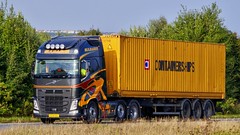
- Get More Information Here:
- Recovery Gear Geelong
byAlma Abell
Before buying grapes, you need to understand a little about them. Specific grapes grow in specific regions very well. Whenever you find grape vines for sale, whether online or in a nursery, a good description should tell you what zone the grapes will grow in.
Zone Rating
Special detailed maps will show you the zones and how they are divided. This will help you compare your area with the plant. For example, a plant with a zone of five to nine means that in zone five, six, seven, eight or nine, the plant will grow appropriately.
To find your zone rating number, you will need to speak with your USDA Extension Service in your county. If their location is local, you may be able to visit them and see the maps. Otherwise, they may send you copies of the map. If you don’t need to see proof, they can easily tell you your zone numbers over the telephone.
Growing Season
You will also need to know the average growing season in your region. This will help you choose which type of grapes to buy. In most climates, grape vines should be planted in spring, but use your judgment.
The growing season goes along with the zone rating, as well. Most grape vine sellers will tell you the zone rating number on the grape. Choose one that is compatible with your area, and then you can easily find growing season information on those particular grape vines.
Type of Wine
If you are growing grapes strictly to make your own wine, then you will also need to take that into consideration. One of the best types of grapes is the Vitis Vinifera, which is the common grape. This is used in most of the world’s wine and comes in both red and white varieties. It usually requires a hot climate with a mild winter, but it is possible to grow it almost anywhere in North America.
Types of wines you can make with the Vitis vinifera include Sauvignon Blanc, Cabernet Sauvignon, Merlot, Zinfandel and Pinot Noir.
Another great choice of grape is the Concord grape and its affiliates. These can grow in the northeastern areas of the United States and in Canada. Some people believe that these grapes add a musky taste to wines, though for home brewing, this may not be a problem.
